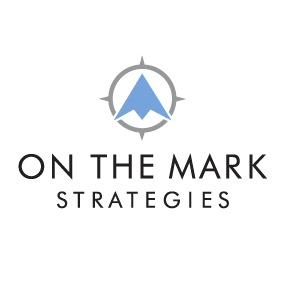“In order to carry out a positive action we must develop here a positive vision.” -Dalai Lama
Credit unions are in the midst of strategic planning season. Most executives are either preparing for an upcoming planning session or coming out of one. However, as we tell our clients all the time, “strategic planning is a process, not a date on a calendar.
Strategic planning often involves multiple steps: reviewing trends, conducting a SWOT analysis (although we recommend throwing out the SWOT in this CU Insight article), looking back on the prior plan, running numbers, analyzing strategy, determining tactics, setting objectives and much more.
When it comes to planning, sometimes one of the most important things you can do as a credit union is not to plan. It’s to cast a vision. This is especially true if the letter “C” is in your title: CEO, CFO, CMO, CLO, CXO, etc.
Why? Because when the vision expands, the credit union expands.
So how do you go about casting a vision for your credit union? Here are two ways.
Use the VTFM Framework
This technique is detailed in the book The Six Disciplines of Agile Marketing. The VTFM methodology stands for:
- Vision—a singular statement, aspirational and unchanging; the reason for the organization’s existence. Some may think of this in terms of a “big hairy, audacious goal.” One our client’s big picture vision is to double in size every five years. Another is Advocate. Relate. Educate. When building your vision, watch overused words like community, member, service, etc. The more unique your vision is, the better it is.
- Themes—These are actionable statements that are known and understood by the entire organization. They are typically one to three years. Think in terms of strategic initiatives. The book uses T-Mobile’s theme of simplicity and Netflix’s theme of original content as examples. A credit union theme might encompass reaching the Hispanic market, embracing and utilizing our data or moving to a more digital approach.
- Focus—These are areas you concentrate on in short timeframes, typically one to two quarters. They connect and tie to your themes. In our trademarked CU Growth Accelerator program, we help clients implement the 90 Day Planning Cycle. With this approach, you break down your larger goals and initiatives into 90 day sprints.
- Metrics—The key in the VTFM framework is to make sure your metrics are not “vanity metrics.” For example, rather than track website visits, track sales conversions (like accounts opened on the site or loans closed through the site). When looking at credit union metrics, make sure you are measuring those items that move the needle the most on your sales numbers.
Expand Your Vision
This technique is one we use for many of our clients who are currently experiencing plateaus or roadblocks in their credit union. Here is the process:
- Celebrate the wins—The best place to start vision casting is to reflect and pause on your current wins. Sometimes we focus so much on the future we forget to look back at our past. This is especially important if you are reaching milestones in your time as a leader: for example, five, ten or more years as the CEO. What are things you’ve accomplished during that time period?
- Paint a picture for what next 10 years looks like—During this portion of the exercise, you answer key questions. These include, what is your vision for your credit union? How can you expand that vision? What is possible for your credit union? Take some time to journal and write down your thoughts. When expanding your vision, think in terms of four key areas: people, products, community and size. For example, what type of people do you want to employ (universal banker?), what products do you need to offer (enhanced mobile experience?), what difference do you want to make (serving the underserved?) and how big do you want to grow (assets and loans?)?
- Next inspired action—One of the traps of setting a larger vision is that it can be so big or have such a futuristic time period that you don’t know what is next. This is where the “next inspired” action step arrives. Once the vision is set, what are the things you need to accomplish in the next 12 or 18 months? For example, you might need to hire for growth, find a new core system or invest more in marketing. The more detail you provide in this stage, the more likely you are to take your thoughts from vision to action.
Sometimes the biggest barrier to our growth is our own mindset. Our own lack of vision. It actually takes work to set a vision. But using the VTFM framework or expanding your vision moves you forward. As the writer of Proverbs said, “Where there is no vision, the people perish.”Don’t let your credit union perish—instead, cast the vision.








